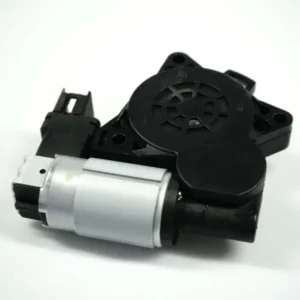The realm of energy storage is undergoing a seismic shift, and Lithium Ion Battery Pack is at the heart of this transformation. As our reliance on portable electronics and electric vehicles skyrockets, innovations in battery technology have never been more crucial. The demand for efficient, robust, and sustainable batteries is reshaping industries from smartphones to renewable energy solutions. But what exactly is driving this surge in innovation? The answer lies in groundbreaking advancements like solid-state batteries, cutting-edge nanotechnology, and AI-powered intelligent systems.
How Solid-State Lithium Ion Batteries Are Revolutionizing the Market
Solid-state lithium-ion batteries are capturing attention for their potential to transform energy storage. Unlike traditional liquid electrolyte systems, solid-state designs utilize a solid electrolyte, significantly enhancing safety and stability. This shift minimizes risks like leaks or fires, making these batteries more reliable for various applications.
Moreover, solid-state technology allows for higher energy densities compared to conventional counterparts. Users can expect longer-lasting performance in smaller packages—ideal for everything from electric vehicles to portable gadgets. The compact nature of these batteries means manufacturers can innovate with design and functionality without compromising on power.
The ongoing research suggests that commercial viability is around the corner. As production scales up, we may soon witness widespread adoption across industries eager to embrace safer and more efficient battery solutions.
The Role of Nanotechnology in Enhancing Lithium-Ion Battery Packs
Nanotechnology is pivotal in the development of lithium-ion battery packs. Researchers can significantly improve energy density and charging speeds by manipulating materials at the nanoscale. This enhancement level allows for lighter, more efficient, and longer-lasting batteries.
One of the most exciting advancements involves using nanomaterials like graphene and carbon nanotubes. These substances increase conductivity within battery electrodes, allowing ions to move faster during charge and discharge cycles. The result is reduced charging time without compromising capacity or safety.
Moreover, nanotechnology aids in creating better electrolyte solutions that enhance stability and performance under various conditions. As these innovations continue to evolve, they promise to reshape how we think about energy storage systems in everything from electric vehicles to portable electronics.
How AI and Machine Learning Are Shaping the Future of Lithium Ion Battery
Artificial Intelligence (AI) and machine learning are transforming the landscape of Lithium Ion Battery technology. These technologies can optimize battery performance and lifespan by analysing vast amounts of data. Predictive algorithms help determine the best charging cycles, enhancing efficiency while minimizing wear.
Moreover, AI-driven systems can identify potential faults before they escalate into significant issues. This predictive maintenance reduces downtime and improves safety across various applications, from electric vehicles to renewable energy storage solutions. As AI continues to evolve, it will further refine how we manage battery health.
Machine learning also plays a critical role in innovation. It enables researchers to simulate new materials for better energy density or faster charging capabilities. Future lithium-ion batteries could become more intelligent and adaptive with continuous learning from real-world usage patterns.
High-Energy-Density: The Next Generation of Lithium-Ion Battery Packs
High-energy-density lithium-ion battery packs are set to redefine energy storage. They’re designed to store more energy in a smaller space, making them ideal for various applications, from electric vehicles to portable electronics. These advancements mean longer-lasting devices and increased range for EVs without sacrificing weight or size.
Recent innovations focus on improving the chemistry of these batteries. By optimizing materials like silicon anodes and utilizing advanced cathode designs, manufacturers can achieve significant boosts in capacity. This shift enhances performance and opens new avenues for technology integration across industries.
The demand for high-energy density solutions continues to rise as consumers seek greater efficiency and convenience. With ongoing research and development, the future looks bright for next-generation lithium-ion battery packs that promise enhanced power without compromising safety or sustainability.
The Impact of Fast-Charging Technology on Lithium-Ion Battery Pack Efficiency
Fast-charging technology has transformed how we interact with our devices. With the ability to recharge lithium-ion battery packs significantly faster than traditional methods, users can enjoy more convenience and flexibility. This innovation addresses one of the biggest pain points—long charging times—that often hinder user experience.
The efficiency of these batteries is a critical focus for manufacturers. Fast-charging solutions optimize power delivery while minimizing heat generation, which could degrade battery health. Cutting-edge designs incorporate advanced algorithms that manage energy flow, ensuring safety without compromising speed.
As infrastructure evolves to support rapid charging stations, electric vehicles and portable electronics benefit immensely from this technology. Consumers are increasingly demanding quick turnaround times in their daily routines, making fast charging an essential feature in modern lithium-ion battery packs—shaping market trends and consumer expectations alike.
How Thermal Management Systems Are Advancing Lithium Battery Pack Safety
Thermal management systems play a crucial role in enhancing the safety of Lithium Battery Pack. By controlling temperature fluctuations, these systems prevent overheating and mitigate risks associated with thermal runaway. This is vital for consumer electronics, electric vehicles, and renewable energy storage.
Advanced materials like phase change substances absorb excess heat, ensuring that batteries operate within safe temperature ranges. Integrated cooling solutions, such as liquid or air cooling channels, further contribute by effectively dissipating heat during high-performance demands.
These innovations improve battery longevity and performance while ensuring user safety. The focus on efficient thermal management helps build consumer trust in lithium-ion technology across various applications—from smartphones to electric cars—setting new industry standards for reliability and security.
Recycling and Sustainability Innovations in Lithium-Ion Battery Packs
Recycling lithium-ion battery packs is crucial for reducing environmental impact. Innovative techniques are emerging that focus on reclaiming valuable materials like nickel, cobalt, and lithium from spent batteries. These processes minimise waste and reduce the need for new raw materials.
Companies are investing in closed-loop systems to ensure that every part of the battery can be reused or recycled. This sustainable approach helps create a circular economy where resources are continuously repurposed rather than discarded. It’s an exciting shift toward greener technologies.
Furthermore, advancements in recycling technology are making it more efficient and cost-effective. New methods allow for higher recovery rates and lower energy consumption during recycling operations. As these innovations take hold, they promise to make lithium-ion battery production more sustainable while supporting the growing demand for renewable energy solutions.
The Evolution of Battery Management Systems (BMS) in Lithium Ion Technology
Battery Management Systems (BMS) have evolved significantly alongside lithium-ion technology advancements. Initially, these systems focused primarily on monitoring the battery’s voltage and temperature to prevent overcharging or overheating. As demand for efficiency grew, so did the complexity of BMS functionalities.
Modern BMS are now equipped with sophisticated algorithms that enable real-time data analysis and predictive modelling. They enhance battery performance by optimizing charging cycles and extending lifespan through effective cell workload distribution. This level of intelligence ensures that batteries operate within safe parameters.
Moreover, integration with smart devices has become commonplace. Users can monitor their battery packs remotely via apps, gaining insights into health status and performance metrics. The convergence of BMS with IoT technologies allows for seamless communication between devices, paving the way for enhanced energy management solutions in applications like electric vehicles and renewable energy systems.
Conclusion
Advancements in Lithium Ion Battery Pack technology are pushing boundaries. Innovations like solid-state batteries and nanotechnology are setting new standards for performance and safety. This evolution is crucial as the demand for energy-efficient solutions grows. As companies continue to invest in AI and machine learning, we can expect smarter battery management systems that enhance longevity and efficiency. Enhanced thermal management will improve safety, making these packs more reliable for various applications.
FAQs
What are solid-state lithium-ion batteries?
Solid-state lithium-ion batteries use a solid electrolyte instead of the liquid or gel electrolytes in traditional batteries. This innovation enhances safety by reducing flammability risks and allows for higher energy densities, making them an exciting prospect for various applications.
How does nanotechnology improve Lithium Ion Battery Pack?
Nanotechnology plays a vital role in enhancing the performance of Lithium Ion Battery Pack. Manufacturers can increase surface area and conductivity by manipulating materials at the nanoscale. This leads to faster charging times, greater efficiency, and improved battery lifespan.
What advancements are being made in recycling lithium-ion batteries?
Recycling processes for lithium-ion batteries have significantly improved, with new technologies emerging to recover valuable materials like cobalt and nickel. Enhanced recycling methods promote sustainability and help reduce costs associated with raw material extraction.
How are lithium-ion batteries used in electric vehicles?
Lithium-ion batteries are the primary source of energy for electric vehicles. They power the motor, lights, and other onboard electronics. As EVs continue to gain popularity, there is a continuous effort to improve battery technology to increase range and reduce charging times.
What are the benefits of using lithium-ion batteries in portable electronic devices?
Lithium-ion batteries offer several advantages in portable electronic devices such as smartphones and laptops. They have a higher energy density, meaning they can store more energy in a smaller space. They also have a longer lifespan compared to other types of batteries, allowing for more extended use without needing frequent replacement. They also have a lower self-discharge rate, making them ideal for devices that may sit unused for periods.
| Related Business Listings |
| Contact Directory |
| Local Business Profiles |




